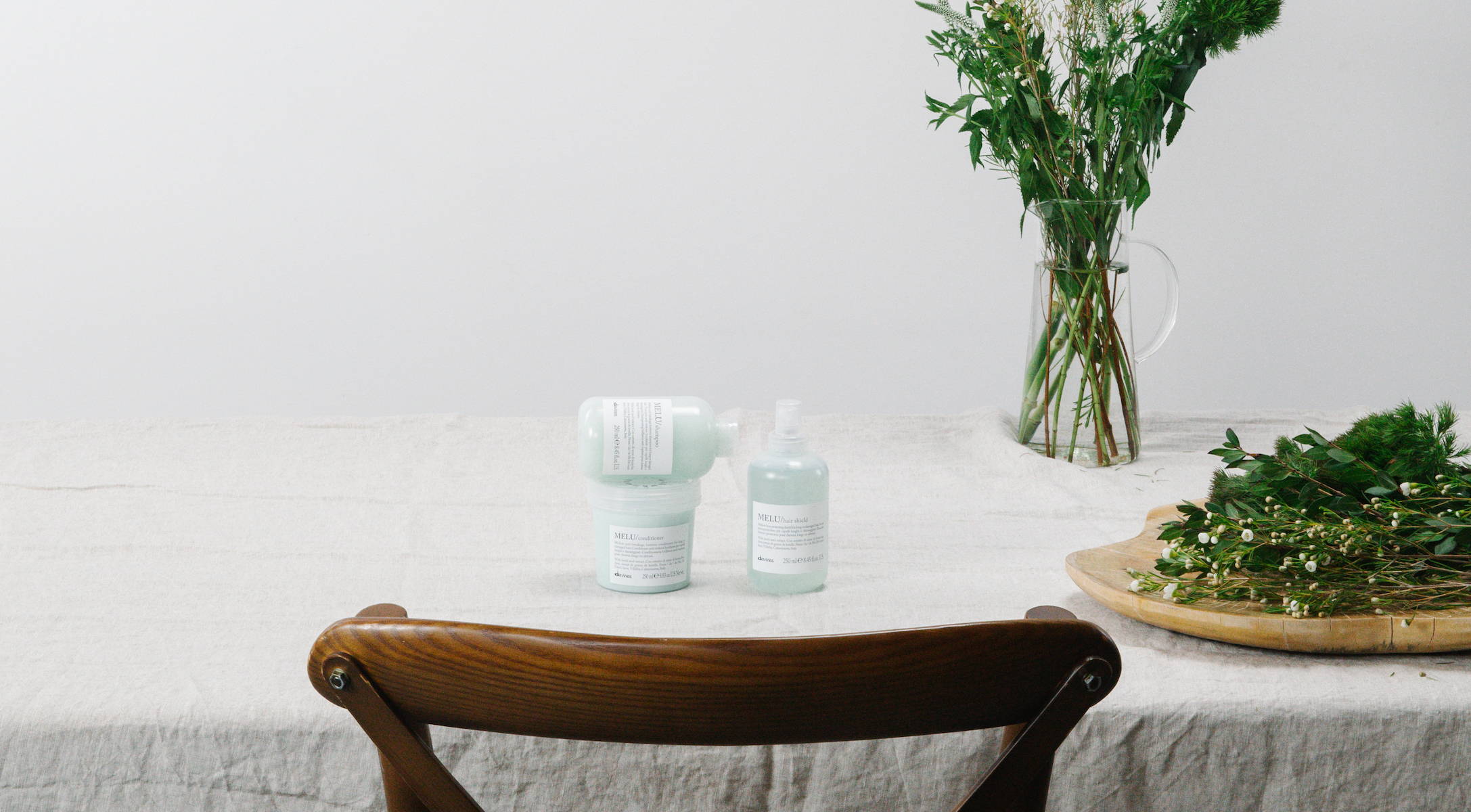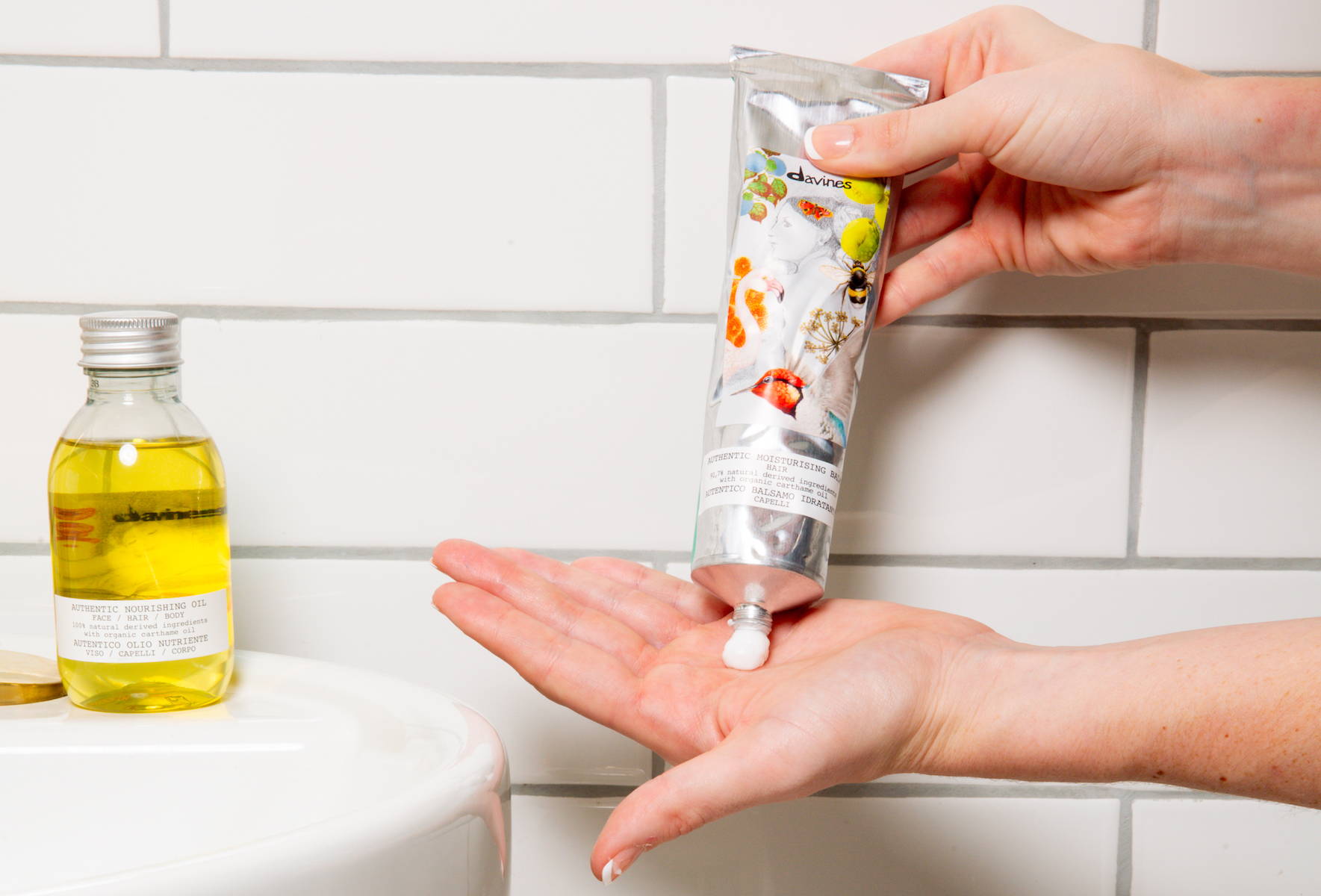Free Carbon Neutral Shipping On Orders $75+, Plus Free Samples!
Buy Now and Pay Later in 4-interest free installments with Klarna
Between the heat styling, chemical treatments, hair color and tight hairstyles, you likely put your strands through alot. Everyday styling and hair processes can lead to things like split ends, frizz, a lack of moisture, and overall dullness. Straw-like strands are a major downer, no matter how cool your cut or color. If you’ve got brittle hair that’s dry and untamable, and you’re looking for answers. Look no further. We’re telling you how to fix brittle hair ahead, plus the best products and tips to prevent damage and keep your hair hydrated.
So what is brittle hair? Brittle hair is a combination of dull, frizzy and dry hair. The most common signs and symptoms of brittle hair include excessive dryness, dullness, and an increased tendency to break. Brittle hair doesn't mean your hair is thinning.
Brittle hair tends to break from the middle of the hair strand, whereas in thinning of hair, it comes off from the root. Naturally textured and curly hair is more prone to becoming brittle. These hair types typically don’t have as smooth a cuticle, making them rougher to begin with. It’s also harder for the natural oils in your scalp to travel all the way down curly strands, making them innately drier. Proper hydration is a must for hair health. And while nutritional deficiencies and hormonal imbalances can make it worse, inadequate moisture in the hair shaft is ultimately what leads to brittleness. By now you’re probably wondering, can brittle hair be repaired? Luckily, the majority of things that contribute to brittleness are external factors and things that are in our control. Ahead is everything you can do in order to avoid those factors and keep your strands from snapping.
If you’ve been asking yourself “why is my hair so brittle?” lately, and you regularly use hot tools this is likely your answer. Preventing the damaging effects of blow dryers, curling irons, and flat irons is one of the most important steps you can take to stave off brittleness. So it’s important to use the right temperature and hair products for your hair type when heat styling. Follow these tips to keep your hair healthy and minimize damage.

A heat protection spray minimizes heat damage by coating your strands before they’re exposed to heat. This protects the hair structure from the stress of the hot tools. Apply your heat protectant on towel dried hair generously. Comb through and follow with your desired styling products.
When it comes to the temperature setting of your hot tool, you should never exceed 400°F. Fine or damaged hair requires the lowest heat setting. The thicker and stronger your hair, the higher the temperature can be. If you hear sizzling or smell burning when you touch an iron to your hair, your tool is too hot.
Another must when it comes to minimizing damage while heat styling is to use only high quality, professional grade tools. Quality hot tools minimize damage, deliver better results, and last longer. Investing in professional quality tools to maintain and promote healthy hair is essential.
The key to using heating tools without causing damage is to use them in moderation. Generally, you should limit the use of heating tools to two or three times per week. The thicker or coarser your hair, the more frequently you can use them, but it's still important to take precautions to avoid damage.
The benefits of deep conditioning treatments for brittle and damaged hair are unmatched when it comes to repairing your strands. Deep conditioning helps restore lost moisture, a critical element for combating dryness and brittleness. Deep conditioners are packed with nourishing ingredients like proteins, vitamins, and fatty acids that can strengthen and repair hair from the inside out. The type of deep conditioner that’s best is one that aligns with your hair type. There are formulas designed for all textures, from fine and straight to curly and coily. In general, choose a deep conditioning treatment with ingredients like keratin, argan oil, or coconut oil. All of these are known for their hair rejuvenating properties. Depending on the condition of your hair, deep condition weekly. But if your hair feels really dry, you can do it two or three times a week.
In addition to deep conditioning your brittle hair, you must tackle those split ends and breakage. We discussed how things like excessive brushing, tight hairstyles, and rough towel drying can lead to this. So it’s important to be mindful of your day to day hair habits. Maintaining adequate moisture levels in your hair is the number one goal when it comes to eliminating split ends and breakage. Note that dry hair is especially susceptible to damage. Be gentle with your strands when you wash, style and detangle them. Especially when wet. Your hair is much more fragile when wet. Use a wide-tooth comb to detangle your hair gently. Start detangling at the tips and work your way up, rather than pulling through from the roots. This minimizes the risk of breakage compared to fine-tooth combs or brushes. Some other stylist-approved tips for tackling split ends and breakage include:
Wearing protective hairstyles like braids, buns, or loose ponytails reduces the daily mechanical stress on your hair. These styles should be loose and comfortable, avoiding excessive tension on the hair strands.
Getting regular haircuts keeps your hair healthy by trimming away split ends before they result in more significant damage. Neglecting split ends can cause them to travel up the hair shaft, weakening strands.
Frequent chemical treatments like coloring or perms can weaken the hair structure. Space out these treatments and use nourishing products to maintain your hair health.

Environmental factors, particularly humidity, can contribute to frizz and dryness. Managing this is another step towards repairing brittle hair. Hair tends to absorb moisture from the air, causing the shaft to swell and result in a frizzy appearance. Dry hair lacks the necessary moisture and oils to maintain its smoothness and shine. Make sure to use sulfate-free shampoos and conditioners specifically formulated for hydrating dry and frizzy hair. These formulas contain ingredients that help lock in moisture. Look for products with nourishing ingredients like argan oil, shea butter, or coconut oil. These ingredients are known for being able to deeply hydrate the hair and smooth the cuticle. And don’t underestimate the benefits of using leave-in conditioners, as they provide continuous hydration and frizz control throughout the day. Stay away from hair products that contain sulfates, which can strip the hair of natural oils, contributing to more dryness.
When it comes to repairing brittleness with hair care and maintenance, you can’t underestimate the importance of a well-rounded hair care routine. That means finding the best products for your hair. Different hair types (straight, wavy, or curly hair) require different care routines. Be sure to use styling products like hair oil, anti-frizz serums, or styling creams made for your hair type. The goal of your hair care and maintenance is to keep your hair cuticle healthy. The cuticle is the protective barrier for the hair shaft. When it's damaged, the hair becomes more vulnerable to issues like dryness and breakage. Finally, be mindful of the consequences of chemical treatments, like coloring or perming, that can weaken the hair structure.
Still wondering how to treat brittle hair and add shine back to your strands? The most important things you can do to keep brittleness at bay are prevent heat damage, deep condition, address split ends and breakage, manage frizz and dryness and follow a hair care routine for your unique needs and hair type. Use only the highest quality products for damaged hair, like the ones from Davines. All our formulas are free of harmful toxins, use many natural ingredients, and are made with renewable energy and packaging that minimizes the environmental impact.
by Jaclyn LaBadia, featured contributor
Laisser un commentaire
Les commentaires sont approuvés avant leur publication.